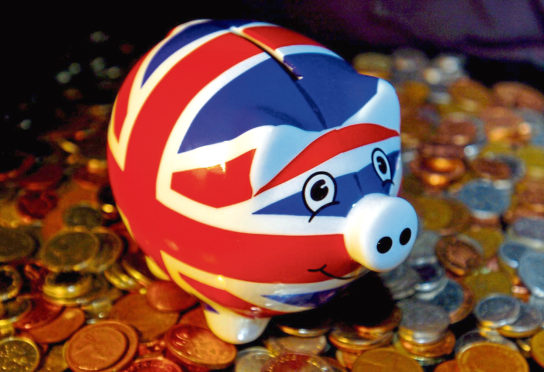Hard pressed councils’ budgets could be thrown into disarray after the UK government hiked the rate of borrowing on local authority funding.
HM Treasury announced an increase on the rate of new loans by one percentage point, “effective immediately”, in a letter sent to every council finance chief in the UK.
Local authorities can borrow for capital spending from the public works loan board (PWLB) to pay for projects like school buildings and council houses
The PWLB is often a cheaper method of borrowing for councils and can be paid back over longer periods of time.
In Fife, funding of the “schools element” of the new campus for Woodmill High, St Columba’s and Fife College would be funded in part by the local authority borrowing from the PWLB.
Angus Council said the increase would have a bearing on any future capital expenditure plans.
Perth and Kinross Council has a borrowing requirement for capital projects of around £470 million over the next decade, which the council says is to finance major capital projects such as the Cross Tay Link Road and the replacement of Perth High School. It has not been determined if this will come entirely from the PWLB.
Borrowing from the PWLB is one of two types of borrowing Dundee City Council uses for capital projects, primarily for long term loans over one year.
Dundee City Council administration leader John Alexander said he is asking “immediate questions” with local authority finance chiefs to determine the extent this will impact future council spending.
He said: “The impacts are, right now, unclear but of course, any increase in the cost of borrowing will have an impact on council finances.
“Some of the savings we were able to make on the last budget, to reduce the impact of cuts to the revenue budget, have been through re-profiling loans. So any increase on the rate will impact on the cost of borrowing.
“There are still investments to be made on the council’s capital plan and some big items we will have to look at.
“I will be sitting with the council finance team to find out fully how this will impact us.
“I am concerned about the impact of any potential cost increases and the impact on future borrowing for the capital budget, which is paid back from the revenue budget.
“Inevitably, we will need to understand what this will mean across the council portfolio.”
According to the government, Dundee City Council has a debt of £442 million to the Treasury, as of April 1 2019.
Fife Council is £479 million in debt to the Treasury, Perth and Kinross £340 million and Angus Council £118 million.
A HM Treasury spokesperson said: “This one percentage point increase takes rates back to levels that were available in 2018.
“Even with this change, the PWLB rates offer very good value to local authorities.
“We have also legislated to increase the lending limit of the PWLB to £95 billion, as part of the government’s commitment that local authorities can access financing to support their capital spending plans.”
A spokesperson for Dundee City Council said: “We are aware of these changes and will be looking at our future plans in the light of them.”
An Angus Council spokesman said: “Our finance directorate is already aware of this and has received information on the issue from the council’s external Treasury advisers.
“The change in interest rates will not affect the cost of borrowing previously undertaken but the finance directorate will be considering the implications for any potential future borrowing requirements.”
Laura Robertson, finance operations manager for Fife Council, said: “The increase in rates impacts on new borrowing from the PWLB.
“The existing loans that we have are at fixed rate so the increase will not impact on them.”
Minister for Public Finance Kate Forbes said: “We are disappointed the interest rates for the Public Works Loan Board (PWLB) have increased.
“Local authorities’ capital investment plans will inevitably be impacted by this increase in PWLB rates. Current investment plans will have been based on prevailing PWLB rates and this increase will affect the affordability of these plans. This interest rate increase may lead to local authority investment plans being scaled back or delayed. This is unfortunate at a time when local authorities are being encouraged to undertake capital investment.
“The Scottish Government recognises the importance of infrastructure investment to our economy and has provided local government with an additional £207.8 million capital funding in 2019-20.”










